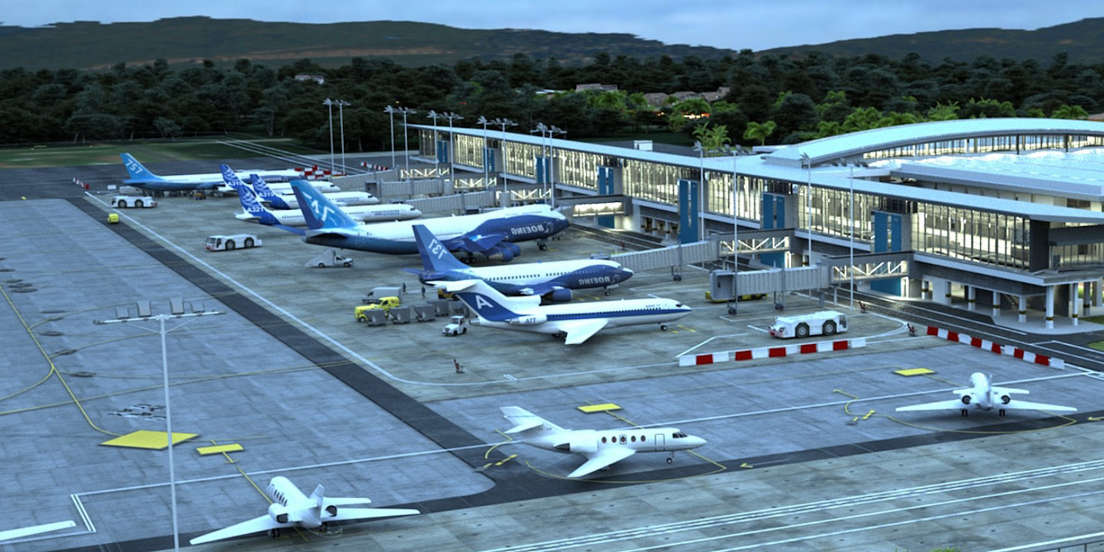In the picture
Palmerola International Airport has begun operations, 75 kilometres from Tegucigalpa [AIP].
Anyone who has flown to Tegucigalpa will have experienced the difficulty of taking off and landing between the many hills that make up the city. After a nine-year project , Palmerola International Airport (AIP) opened to air traffic in November, 75 kilometres from the Honduran capital, sharing a runway with the main US military base in Central America. The base, set up in the mid-1980s when, towards the end of the Cold War, communism seemed to be reviving in the region (the US decided to invade Grenada and assist the Contras against the Sandinistas in Nicaragua), also houses the Honduran Air Force and Joint Task Force Bravo.
Palmerola International Airport(AIP) was inaugurated on 15 October and received its first flights a month later (there were some delays in the execution of the new connections by the airlines). development It is intended to be a revulsive for the economic development of Tegucigalpa's area , where tourism has been conditioned by the limited traffic capacity of the historic Toncontín airport, and also aspires to surpass the airport of the capital of El Salvador as a Central American hub on routes between North and South America. The total cost of construction - raising the new terminal and improving the runway and access - has exceeded $200 million, almost 45% more than initially budgeted. One of the major financiers was Spain, which provided $53 million through a debt conversion programme.
The financing and construction of the AIP has been a long process that has spanned several presidencies and exceeded budget several times. The initiative began under the presidency of Porfirio Lobo in 2012, who commissioned project to Servicios Aeroportuarios Integrados S. A. (Saisa), of group Terra, with an estimated initial investment of $107 million. But that agreement did not go ahead and it was not until 2016 that the project, this time under the presidency of Juan Carlos Hernández, got the final push. The budget then rose to $163 million, and in 2019 it was increased by another $46.2 million. The AIP was completed in 2021 with a final sum of 235 million dollars. Executors attributed the revised figures to the fact that, since the first realisation of the project, airport systems have evolved and there has been a update of regulations.
purpose The AIP is intended to contribute to greater development and economic growth in Honduras in multiple sectors. It is estimated that it will reduce air fares and increase the employment ( entrance, it has created more than two thousand direct jobs to date). It will also increase tourism, as the limitations of Toncontín airport only allow for 800,000 passengers per year. Palmerola seeks to attract international flights from Central America, as it occupies a favourable location between North and South America, and presents itself as a valuable competitor to El Salvador International Airport.
The construction of the new airport has not been without controversy, for fear that it will negatively affect the economic centre surrounding Toncontín, given the reduction in traffic that it may suffer, as international flights will be destined exclusively for Palmerola, while the old facilities will be left for domestic and regional Central American flights. Compared to Toncontín, which has been categorised as one of the most dangerous airports in the world, with a runway of only 1,900 metres in length, Palmerola has a runway of 2,440 metres, standardised security measures and world-class technology.
In the political battle for the medal for the construction of the AIP, former president Manuel Zelaya has also weighed in, claiming that Juan Orlando Hernández was waving "with someone else's hat" by claiming credit for the opening of the new airport, since it was during Zelaya's presidency that the wide roads that connect Tegucigalpa with Comayagua, where the AIP is located, were built, and it was he who culminated the negotiations with the United States to open the US base to civilian use at the White House Oval conference room .
The AIP shares its location with the "Coronel José Enrique Soto Cano" air base, better known as "Soto Cano" or "Palmerola". The US base was erected by Washington between 1984-1985, during the Cold War, with an eye on the Sandinista revolution in Nicaragua. The Palmerola complex is home to the Honduran Air Force base as well as Joint Task Force Bravo, the bi-national unit formed with the US Southern Command. The US has up to 500 troops at the base, who rotate in groups and whose main task mission statement is to participate in joint operations with local forces in the fight against drug trafficking and organised crime.
While there may have been initial doubts about the willingness of both sides to share use - civilian and military - the Honduran authorities have pointed out that this is a good thing for the country, while the US has highlighted the opportunity partnership provided by the IAP.

